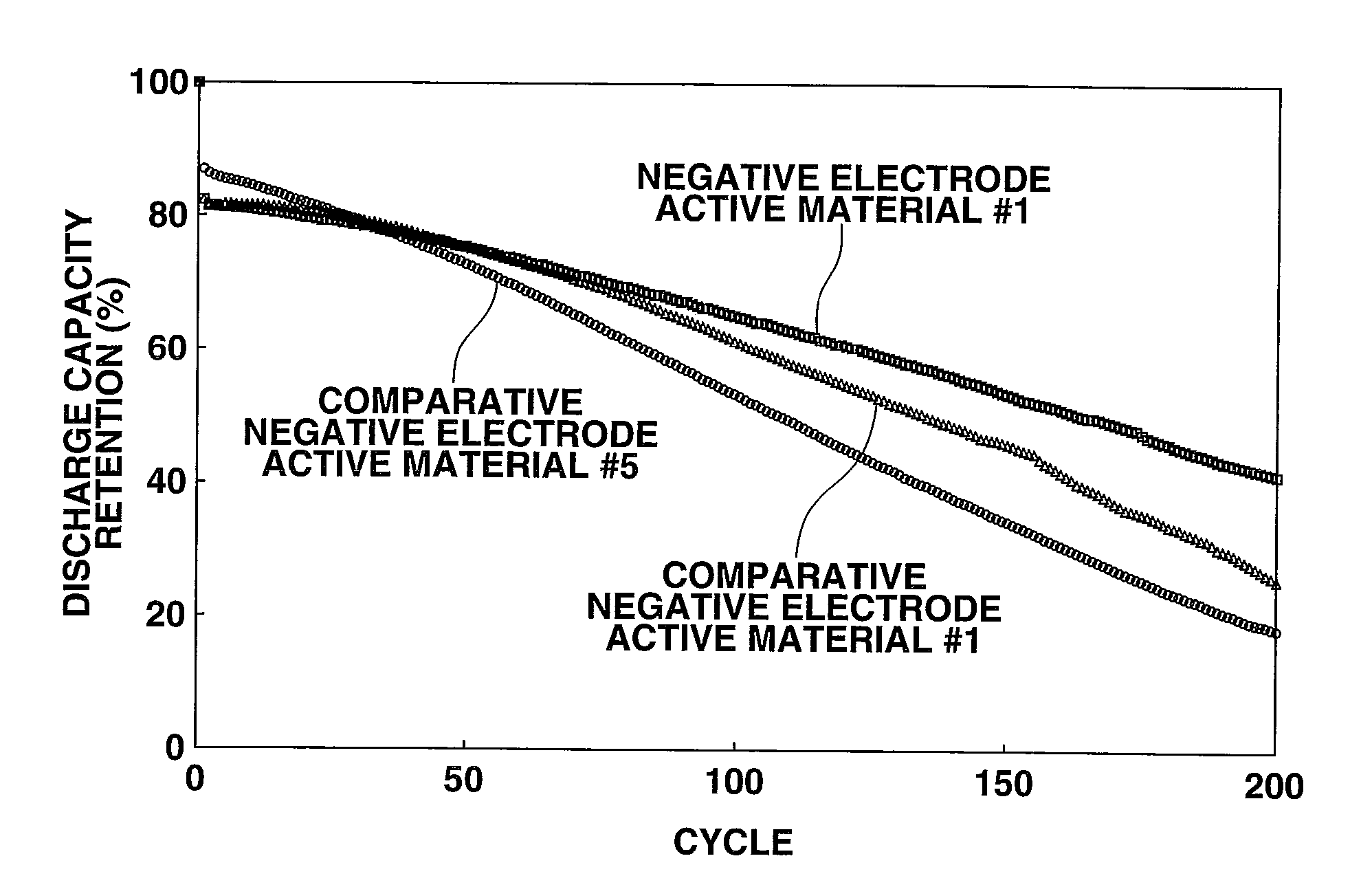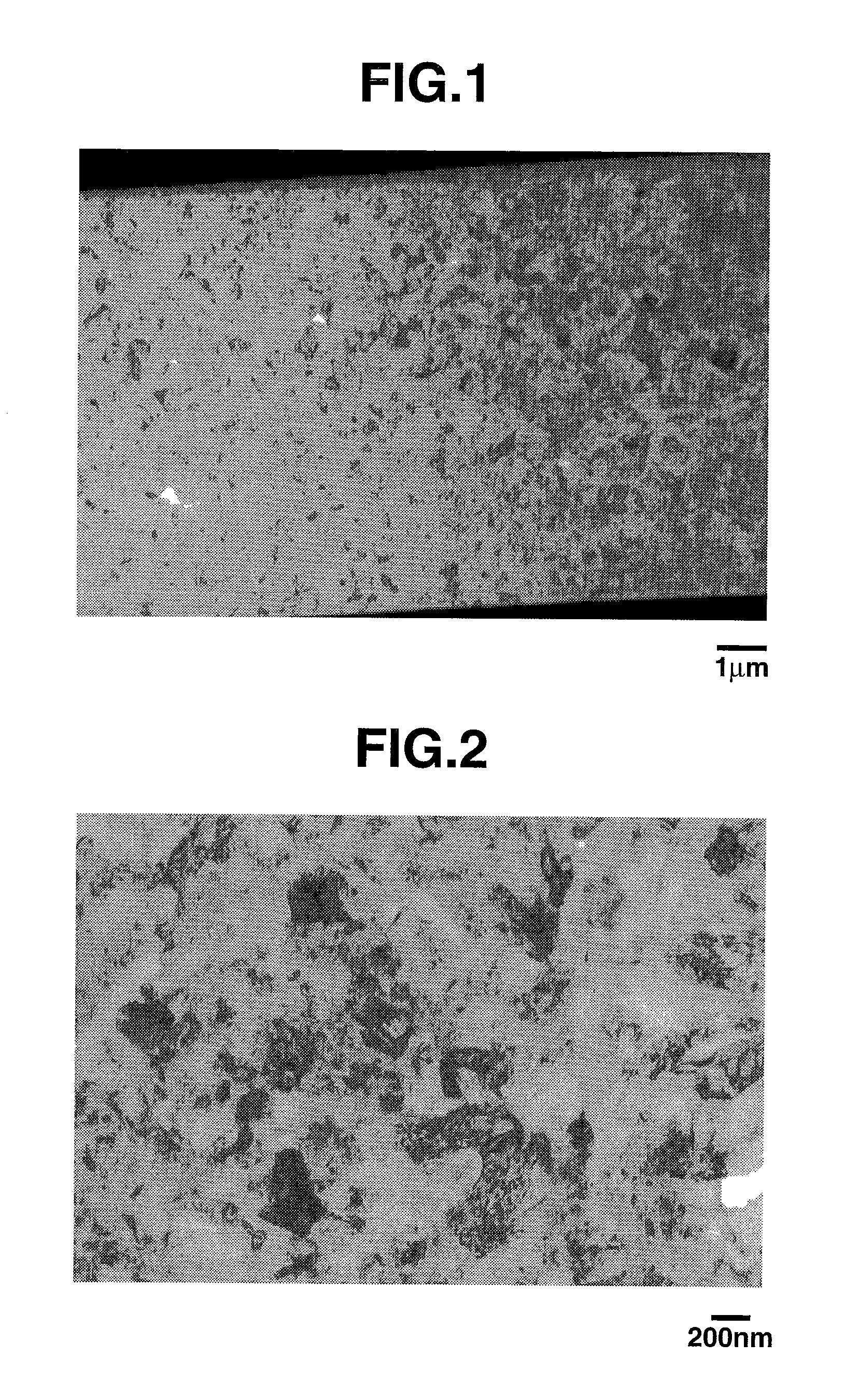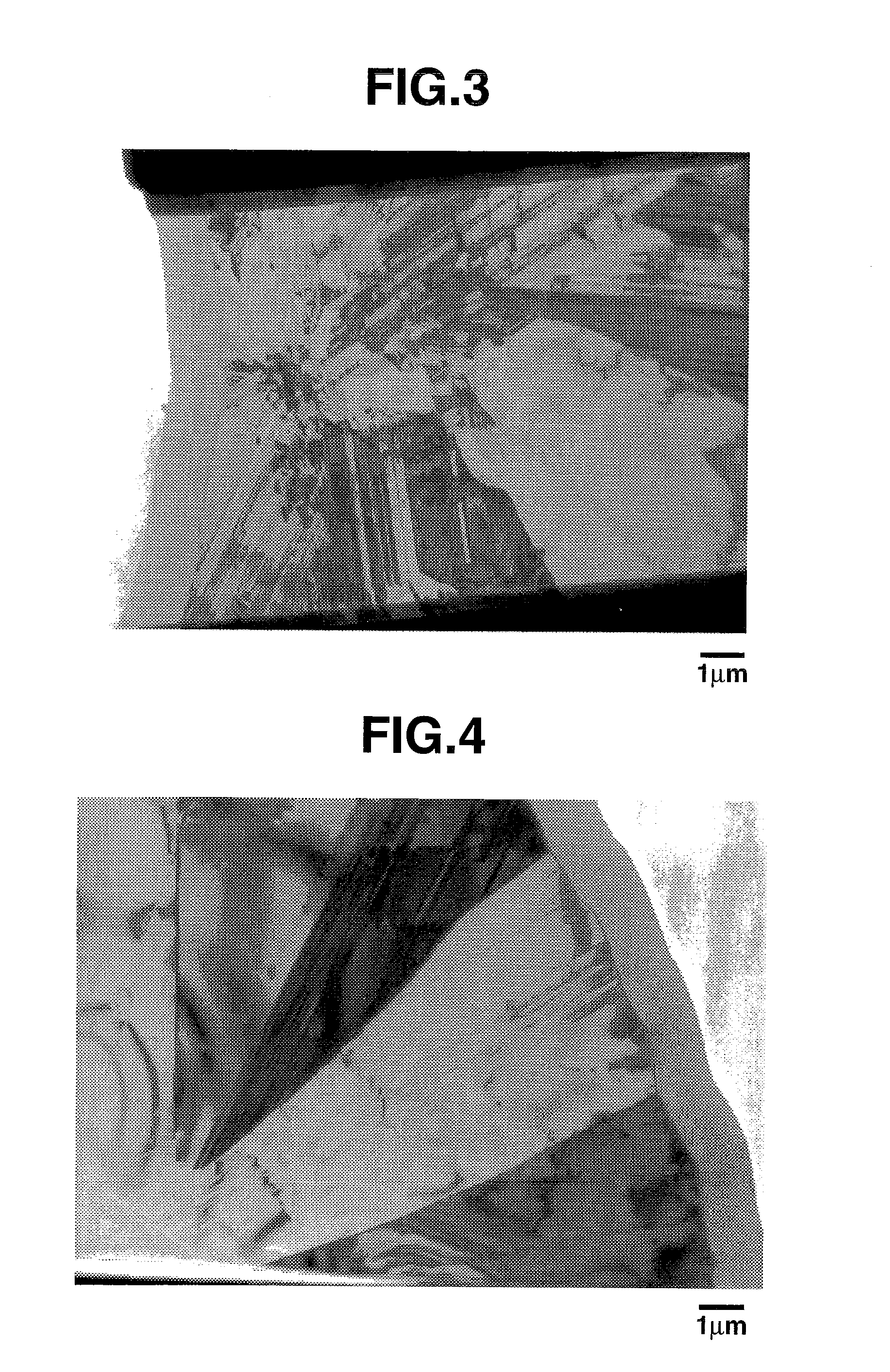Negative electrode material for rechargeable battery with nonaqueous electrolyte, negative electrode for rechargeable battery with nonaqueous electrolyte, rechargeable battery with nonaqueous electrolyte, and process for producing polycrystalline silicon particles for active material for negative electrode material for rechargeable battery with nonaqueous electrolyte
a technology of nonaqueous electrolyte and negative electrode, which is applied in the field of negative electrode material, can solve the problems of difficult control of cooling rate, failure to take full advantage of the potential battery capacity of silicon, and failure to overcome the outstanding problems of silicon negative electrode, etc., to achieve the effect of reducing the volume change upon charge/discharge cycles, high initial efficiency and battery capacity of silicon
- Summary
- Abstract
- Description
- Claims
- Application Information
AI Technical Summary
Benefits of technology
Problems solved by technology
Method used
Image
Examples
example
[0082]Preparation Examples, Examples, and Comparative Examples are given below for further illustrating the invention, but they are not to be construed as limiting the invention thereto. In Examples, all percents (%) are by weight, and the average particle size is a 50% volume cumulative diameter D50 (or median diameter) as determined by particle size distribution measurement utilizing laser light diffractometry.
Preparation of Negative Electrode Active Material #1
[0083]Particulate polycrystalline silicon was prepared by admitting polycrystalline silicon fine particles and feeding monosilane into a fluidized bed at an internal temperature of 800° C. The particulate polycrystalline silicon was ground in a jet mill (AFG-100 by Hosokawa Micron Group) with the built-in classifier operating at 7,200 rpm. Subsequent classification on a classifier (TC-15 by Nisshin Engineering Co., Ltd.) yielded a polycrystalline silicon powder with D50=10.2 μm. The powder had a crystallite size of 44 nm as...
PUM
| Property | Measurement | Unit |
|---|---|---|
| grain diameter | aaaaa | aaaaa |
| specific gravity | aaaaa | aaaaa |
| temperature | aaaaa | aaaaa |
Abstract
Description
Claims
Application Information
 Login to View More
Login to View More - R&D
- Intellectual Property
- Life Sciences
- Materials
- Tech Scout
- Unparalleled Data Quality
- Higher Quality Content
- 60% Fewer Hallucinations
Browse by: Latest US Patents, China's latest patents, Technical Efficacy Thesaurus, Application Domain, Technology Topic, Popular Technical Reports.
© 2025 PatSnap. All rights reserved.Legal|Privacy policy|Modern Slavery Act Transparency Statement|Sitemap|About US| Contact US: help@patsnap.com



